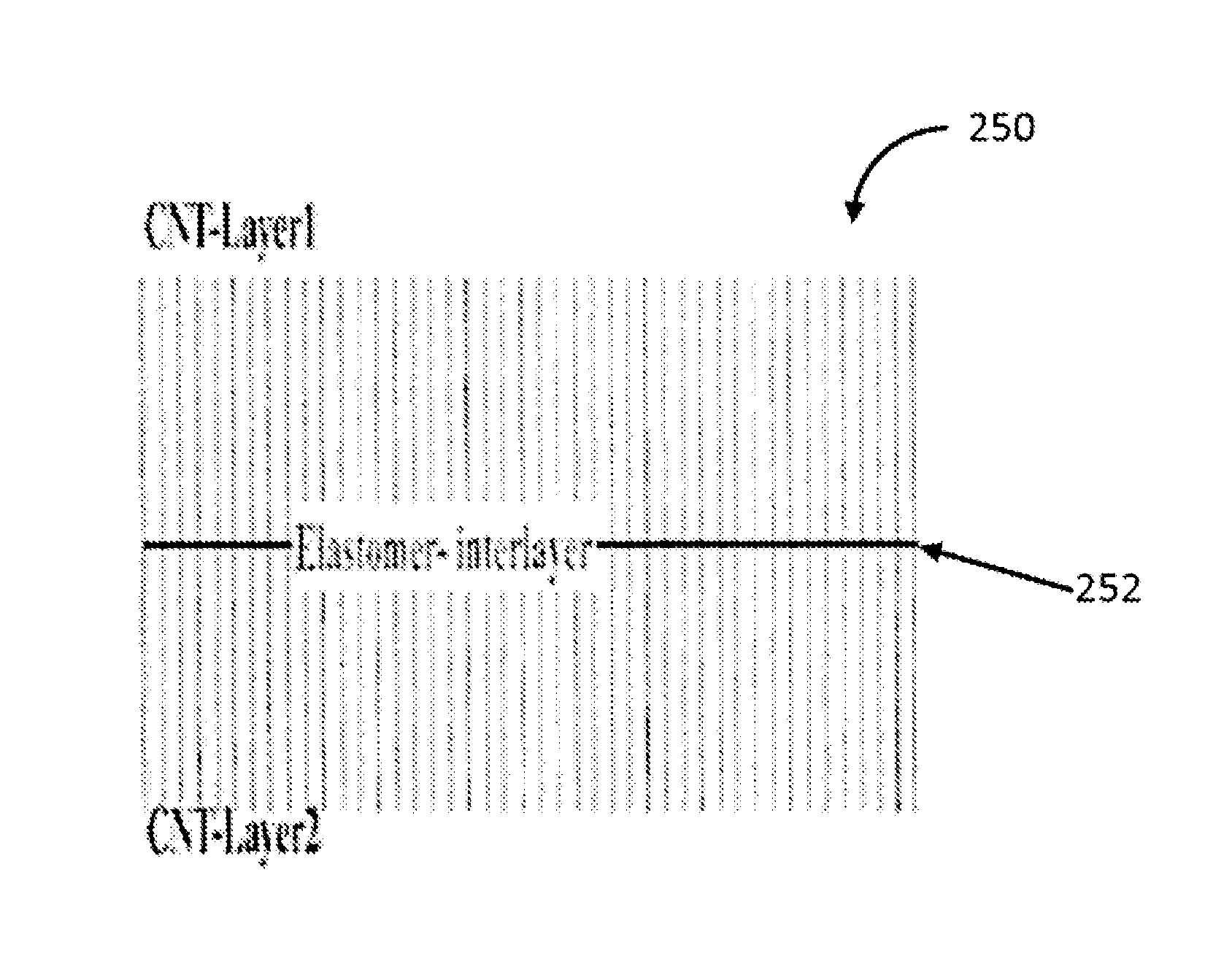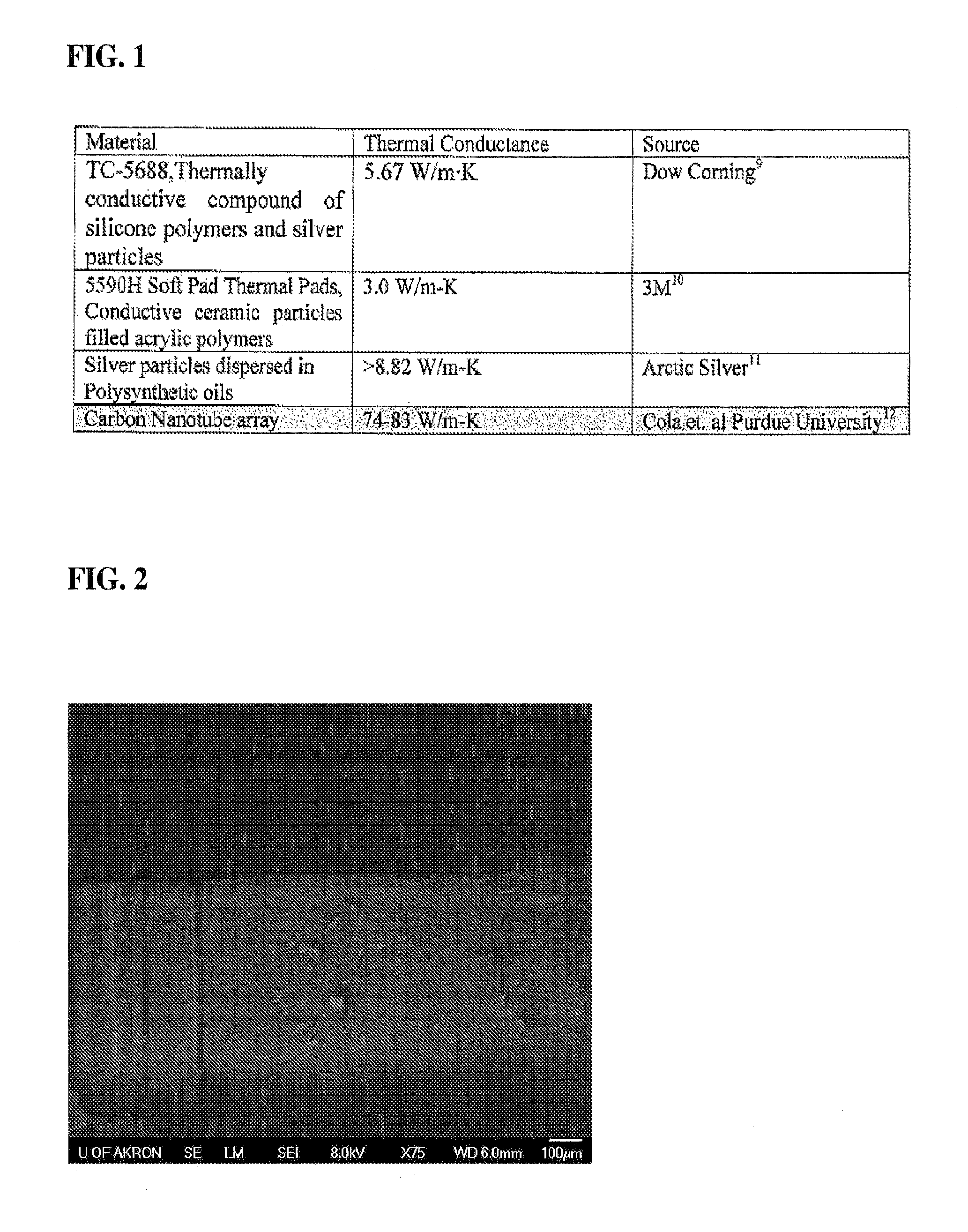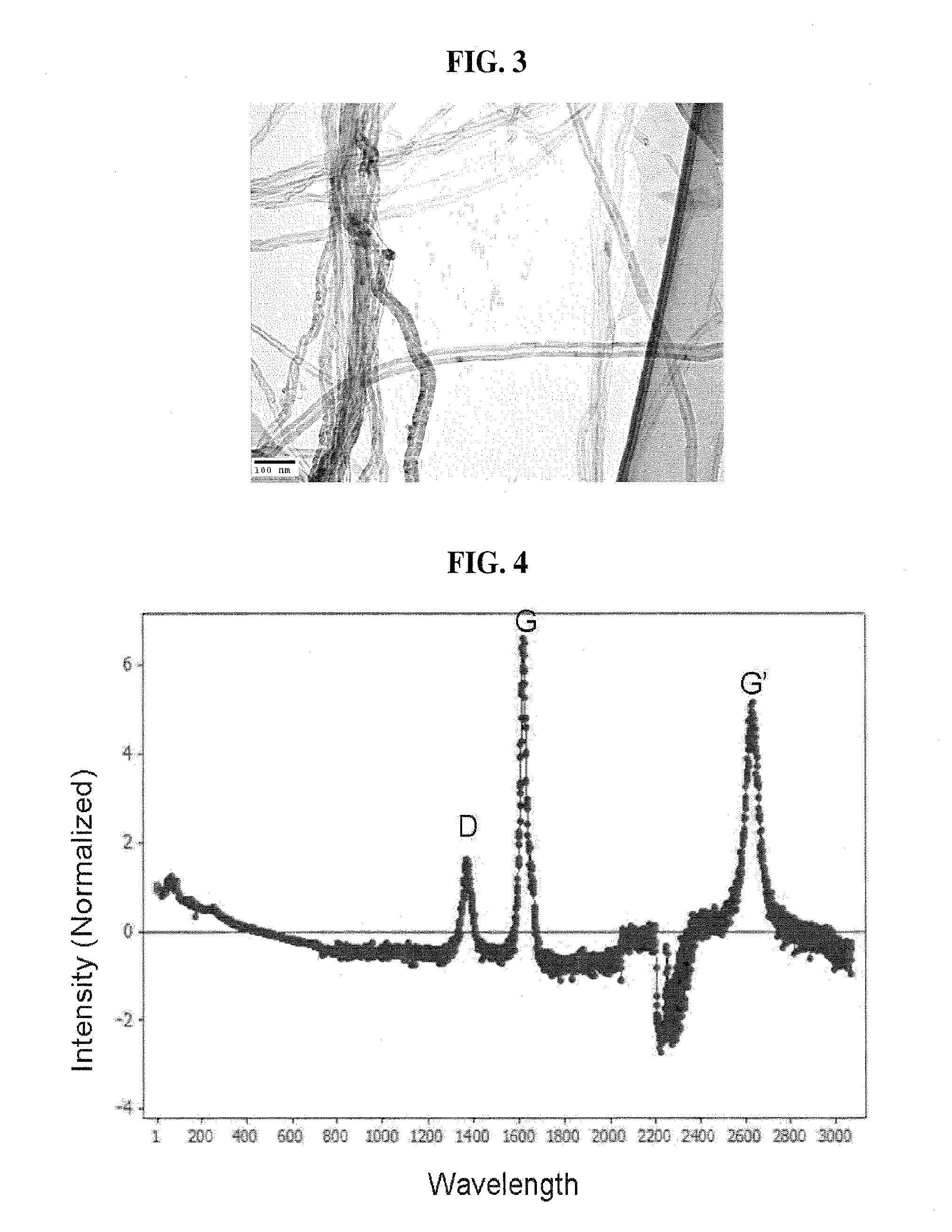Materials and methods for thermal and electrical conductivity
a technology of thermal interface materials and materials, applied in the field of carbon nanotubes, can solve the problems of significant problems associated with current thermal interface materials, inability to efficiently dissipate heat, and failure of microelectronic devices to achieve electrical failure, and achieve low electrical
- Summary
- Abstract
- Description
- Claims
- Application Information
AI Technical Summary
Benefits of technology
Problems solved by technology
Method used
Image
Examples
Embodiment Construction
[0033]First, carbon nanotubes (“CNT”) have excellent heat transfer properties. In the present invention, examples of carbon nanotube arrays for use as thermal interface materials will be described, but it should be understood that other carbon nanostructures may also be suitably used. In the invention, the thermal interface materials provide enhanced and efficient heat transport across an interface. There is a relationship between heat transfer, electronic conduction, and adhesion with respect to carbon nanotube type adhesives. The design of a carbon nanotube based thermal interface material (“TIM”) of the present application is based on quantitative studies of mechanical, electrical, and thermal properties of carbon nanotubes. The present invention may be synthesized in geometries suitable for integration with current heat sink systems. In an example, aligned multi-walled carbon-nanotubes (MWCNT) were synthesized to provide characteristics for more efficient heat transfer. In one a...
PUM
| Property | Measurement | Unit |
|---|---|---|
| length | aaaaa | aaaaa |
| thick | aaaaa | aaaaa |
| thick | aaaaa | aaaaa |
Abstract
Description
Claims
Application Information
 Login to View More
Login to View More - R&D
- Intellectual Property
- Life Sciences
- Materials
- Tech Scout
- Unparalleled Data Quality
- Higher Quality Content
- 60% Fewer Hallucinations
Browse by: Latest US Patents, China's latest patents, Technical Efficacy Thesaurus, Application Domain, Technology Topic, Popular Technical Reports.
© 2025 PatSnap. All rights reserved.Legal|Privacy policy|Modern Slavery Act Transparency Statement|Sitemap|About US| Contact US: help@patsnap.com



